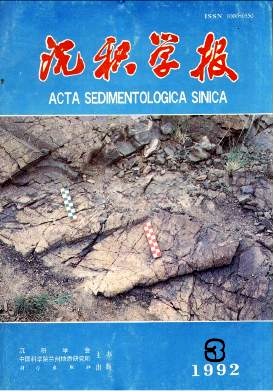Origin and Evolution and Prediction of Porosity in Clastic Reservoir Rocks
- Publish Date: 1992-09-10
Abstract: With the development of oil and gas exploration, a number of high quality clastic rock reservoirs at great depth have been discovered both domestically and abroad. Concerning the porosity, some of them have dominant secondary porosity and others are dominated by preserved primary porosity. Specially the discovery of the later ones changes one's idea of porosity deadline, which attracts petroleum geologists' great attention. Combining new progress and new theory of diagenesis both domestically and abroad with some case history about diagenesis and porosity evolution in some major oil and gas area in our country, this paper describes the new progress of porosity origin, evolution and prediction of clastic reservoir rocks. 1. The dissolution of aluminosilicate is often stronger than carbonate in the reservoirs of some major oil and gas area in our country, wihch is shown that the dissolution of the organic acids in the diagenesis is very clear. The dissolution of organic acids is closely related to the type of kerogen evolved by organic matter in continental sandstone-shale. Type Ⅱ and Ⅲ have higher convertibility from kerogen to organic acids in comparison with type Ⅰ. 2. The origin of high quality reservoirs at great depth with dominant preserved primary intergranular porosity is closely related with burial history of the reservoir rocks. These kinds of reservoirs, Mesozoic and Paleozoic, are widely distributed in Tabei area, Tarim Basin. Lower geothermal grediant, lower thermal maturity, short time of strong chemical diagenesis (80-120℃) and deep burial only since Pliocene, all these are the reasons that resulted in the wide distribution of these reservoirs in the area. 3. Hypogene flow, supergene flow and convection were the main forms of water migration in sedimentary system. It was one of the domination that the secondary porosity development was controlled by the amount of migration of dissolved matter together with fluid migration. Many secondary porosities were often developed and closely related with unconformity and interruption of deposition in geological history because the surfaces of unconformity and interruption of deposition were considered that the sedimentary prism had a period of exposure and leaching. 4. The new progress of clastic rocks diagenesis and porosity evolution has a great significance of the prediction of reseervoir properties. But it is not well perfect yet and still in the investigation stage. It is an urgent need to investigate the various types of models of reservoir porosity origin, evolution and preservation at different geological settings, only in this way, the prediction of reservoir properties could be improved.
| Citation: | Zhu Guohua. Origin and Evolution and Prediction of Porosity in Clastic Reservoir Rocks[J]. Acta Sedimentologica Sinica, 1992, 10(3): 114-123. |






 DownLoad:
DownLoad: